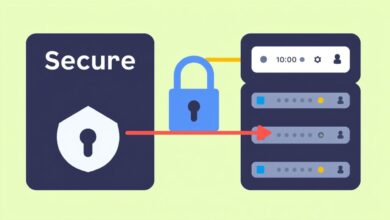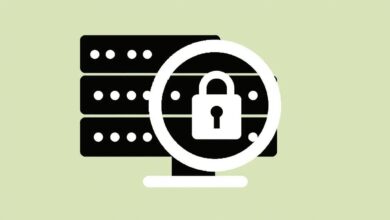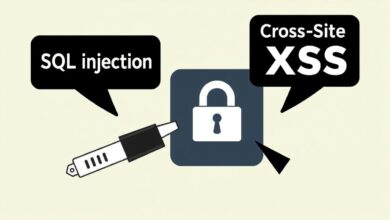Fortifying Your Digital Fortress: A Comprehensive Guide to Securing Web and Database Servers

In today’s digital landscape, your servers are the bedrock of your online presence and operations. Specifically, securing web and database servers is not just a technical task; it’s a fundamental business necessity. These servers often store and process your most valuable asset: data. From customer information and financial records to intellectual property, the consequences of a breach can be devastating, ranging from financial loss and reputational damage to complete operational disruption. Failing to implement robust security measures leaves your digital doors wide open to malicious actors.
Understanding the critical interplay between web servers (like Apache or Nginx) that handle user requests and database servers (like MySQL, PostgreSQL, or SQL Server) that store the application data is the first step. A vulnerability in one can often lead to the compromise of the other. Therefore, a holistic security strategy addressing both is essential.
Why Prioritizing Web and Database Server Security is Non-Negotiable
The threat landscape is constantly evolving. Hackers actively scan for vulnerabilities in common server applications. Unsecured servers are prime targets for various attacks, including:
- Data Breaches: Gaining unauthorized access to sensitive information.
- Ransomware Attacks: Encrypting data and demanding payment for its release.
- Service Disruption: Overloading servers through Denial-of-Service (DoS) attacks.
- Website Defacement: Altering website content, damaging brand image.
- Hosting Malicious Content: Using compromised servers to host phishing sites or malware.
The core objective of securing web and database servers is to build multiple layers of defense, making it significantly harder for attackers to succeed.
[Hint: Insert image/video illustrating the potential impact of a server breach – e.g., data leak graphic]Building a Secure Foundation: Configuration and Network Design
Security starts before you even deploy your applications. A hardened operating system and secure initial server configuration are vital.
- Secure Base Image: Start with a minimal, hardened operating system image. Remove unnecessary services and software.
- Principle of Least Privilege: Configure services and user accounts with the minimum permissions required to function.
- Network Segmentation: This is crucial. Ideally, your database server should not be directly accessible from the internet. Place it in a separate, private network segment, only allowing connections from trusted sources like your web/application server via specific firewall rules.
- Firewalls: Implement and configure firewalls at the network edge and on the servers themselves (host-based firewall) to control inbound and outbound traffic strictly.
Isolating your database server significantly reduces its attack surface, preventing direct brute-force or vulnerability exploitation attempts from the public internet.
Securing the Communication Channel
The connection between your web server, application server (if applicable), and database server is a critical pathway that needs protection. Eavesdropping or manipulation of data in transit can be just as damaging as direct server access.
- Encryption in Transit: Always use strong encryption protocols like TLS/SSL to encrypt data exchanged between server tiers. This prevents attackers from sniffing sensitive information, such as login credentials or application data, as it travels across the network.
- Secure Credential Management: The credentials used by the web/application server to connect to the database are high-value targets. Avoid hardcoding credentials in application code. Use secure methods like environment variables, configuration management tools with encrypted secrets (e.g., HashiCorp Vault), or cloud provider secret management services. Regularly rotate these credentials.
Hardening Your Database Server
Databases require specific security measures beyond network isolation.
Strong Authentication and Access Control
Default database credentials are a common entry point for attackers. Always change default usernames and passwords immediately. Implement strong password policies and consider using database-specific authentication mechanisms integrated with centralized identity management systems where possible.
Preventing Injection Attacks
SQL Injection remains one of the most prevalent and dangerous web application vulnerabilities, directly impacting databases. It occurs when attackers insert malicious SQL code into data input fields, tricking the application into executing unintended database commands.
- Use Parameterized Queries (Prepared Statements): This is the most effective defense. It separates the SQL command structure from the user-supplied data, ensuring data is treated as data, not executable code.
- Use Object-Relational Mappers (ORMs): ORMs often handle query parameterization automatically, reducing the risk of manual errors leading to SQL injection.
- Input Validation and Sanitization: While not a substitute for parameterized queries, validating and sanitizing all user input provides an additional layer of defense.
For more details on common web vulnerabilities like SQL Injection, the OWASP Top 10 project is an excellent resource.
Specific Web Server Security Practices
Web servers face the brunt of internet traffic and require dedicated hardening:
- Keep Software Updated: Regularly apply security patches for the web server software (Apache, Nginx), operating system, and any modules or plugins used.
- Configure Security Headers: Implement HTTP security headers (e.g., Content Security Policy, Strict-Transport-Security, X-Content-Type-Options) to instruct browsers on how to handle content securely.
- Limit Information Disclosure: Configure the server to avoid revealing specific version numbers or directory listings.
- Regular Scans: Use vulnerability scanners to proactively identify weaknesses in your web server configuration and applications.
Continuous Monitoring and Maintenance
Security is an ongoing process, not a one-time setup.
- Logging and Monitoring: Implement comprehensive logging for both web and database servers. Monitor logs for suspicious activity, failed login attempts, and unusual queries. Use centralized logging and monitoring tools for easier analysis.
- Regular Backups: Maintain regular, tested backups of both your web server configurations and your database data. Store backups securely, preferably offsite.
- Incident Response Plan: Have a plan in place for how to respond if a security incident occurs.
Conclusion: A Layered Approach is Key
Effectively securing web and database servers requires a multi-faceted strategy encompassing secure configuration, network isolation, encryption, strong authentication, secure coding practices (especially against injection attacks), and continuous monitoring. No single measure is foolproof; it’s the combination of these layers that creates a resilient defense against the ever-present threats online. Regularly reviewing and updating your security posture is crucial to protecting your valuable data and maintaining the trust of your users. For further reading on enhancing your overall infrastructure security, check out our guide on general security best practices.




